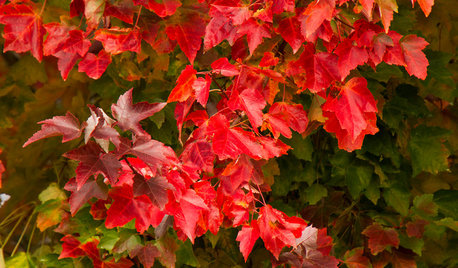Stressed Sugar and Red Maple Seedlings
jinxycat79
14 years ago
Related Stories

GARDENING GUIDES12 Japanese Maples for a Sunny Garden
The right maple in the right place shines in hot summer sun
Full Story
TREESGreat Design Plant: Acer Rubrum Brings Shade and Beauty
Red maple — a fast-growing, low-maintenance Eastern native — has spectacular fall foliage and early-spring flowers that feed pollinators
Full Story
EDIBLE GARDENSSummer Crops: How to Grow Tomatoes
Plant tomato seedlings in spring for one of the best tastes of summer, fresh from your backyard
Full Story
KITCHEN DESIGNHouzz Call: Tell Us About Your First Kitchen
Great or godforsaken? Ragtag or refined? We want to hear about your younger self’s cooking space
Full Story
LANDSCAPE DESIGNThe Unparalleled Power of Trees
Discover the beauty and magic of trees, and why a landscape without them just isn't the same
Full Story
FALL GARDENING6 Trees You'll Fall For
Don’t put down that spade! Autumn is the perfect time for planting these trees
Full Story
FALL GARDENINGWhy Fall Is the Best Time for Planting
Spring is overrated for planting. Starting plants in autumn has advantages for both garden and gardener
Full Story
GARDENING FOR BUTTERFLIES3 Ways Native Plants Make Gardening So Much Better
You probably know about the lower maintenance. But native plants' other benefits go far beyond a little less watering and weeding
Full Story
KITCHEN CABINETSKitchen Cabinet Color: Should You Paint or Stain?
Learn about durability, looks, cost and more for wooden cabinet finishes to make the right choice for your kitchen
Full Story
FARM YOUR YARDHow to Grow Vegetables in Containers
Get glorious vegetables and fruits on your patio with a pro’s guidance — including his personal recipe for potting mix
Full StorySponsored
More Discussions






gardengal48 (PNW Z8/9)
lou_spicewood_tx
Related Professionals
Finneytown Landscape Architects & Landscape Designers · Stoughton Landscape Contractors · Woburn Landscape Contractors · Arlington Landscape Contractors · Fort Atkinson Landscape Contractors · Parkland Landscape Contractors · Shaker Heights Landscape Contractors · Twin Falls Landscape Contractors · Vacaville Landscape Contractors · Vashon Landscape Contractors · Sun Valley Landscape Contractors · Suisun City Landscape Contractors · Charlotte Fence Contractors · Homestead Fence Contractors · West Columbia Fence Contractors